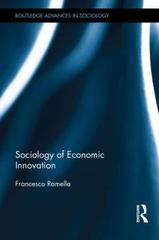Question
The taxation of a monopoly can sometimes produce results different from those that arise in the competitive case. Consider a per unit tax on the
The taxation of a monopoly can sometimes produce results different from those that arise in the competitive case. Consider a per unit tax on the monopolist's good. For every unit sold the monopolist must pay the government $t per unit. In the following assume that the firm has constant marginal costs of production c.
(please answer all parts, thank you!)
a) Write the first order conditions for the profit maximizing level of output given the tax.
b) The first order condition in part (a) establishes an implicit relationship between the quantity chosen by the monopolist and the tax. Use the first order condition to find the derivative of the profit maximizing level quantity with respect to the tax. (Hint: refer to your notes on the incidence of a per unit tax in the competitive case and adapt that analysis to find the derivative of the implicitly defined relationship). Use this answer to write the derivative of the monopoly price with respect to the tax.
c) Suppose that the firm faces a linear demand curve. Use the expression for the derivative in part (b) to determine how much the price rises as a function of the tax. Contrast the answer here with the incidence of a tax in the perfectly competitive case.
d) Suppose instead that the demand curve in part (c) were a constant elasticity curve. Show that for some elasticities the price would now increase by more than the tax. Was this possible in the perfectly competitive market?
Step by Step Solution
There are 3 Steps involved in it
Step: 1

Get Instant Access to Expert-Tailored Solutions
See step-by-step solutions with expert insights and AI powered tools for academic success
Step: 2

Step: 3

Ace Your Homework with AI
Get the answers you need in no time with our AI-driven, step-by-step assistance
Get Started


